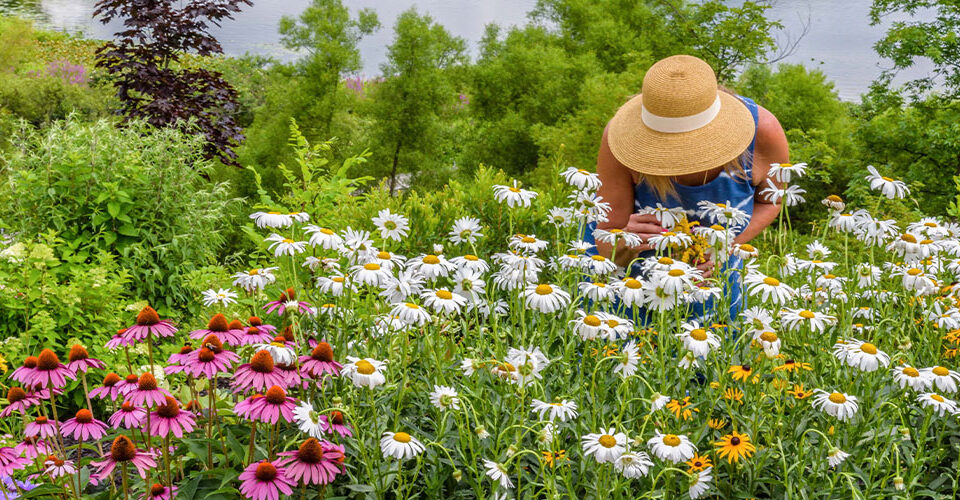How to Grow Wildflower Cutting Gardens
Growing wildflowers is exciting for their seasonal beauty, but you can also make beautiful cut flower arrangements! As each wildflower has different care needs, learning to care for them individually is vital to sustaining their health before cutting them so they last longer. This guide will dive into various types of wildflowers you can grow in your cutting garden today.

Grow Native, Perennial Wildflowers
Perennials are excellent cut wildflowers for your garden, as they come back year after year to add vibrant colour and diversify the texture and shapes in your garden! Selecting native varieties means supporting your local ecosystem and pollinators while also creating a fabulous garden to enjoy. These wildflower perennials are perfect for cutting and creating beautiful mixed arrangements as the flowers bloom so that you can enjoy them both inside and out.

Black-Eyed Susan’s
Black-eyed Susans botanical name is Rudbeckia hirta. A black-eyed Susan resembles its name, as bright yellow oval flowers bloom from the “black eye” or the centre of the wildflower. This native perennial grows its leaves the first year, followed by yellow flowers the next. When fully matured, it grows to 3 feet tall in your garden. It requires lots of sunlight in a dry environment for the best growth. These flowers are perfect for filling your arrangement and framing your statement flowers.

Stargazer Lilies
Stargazer Lilies’ botanical name is called Lilium Orientalis. Usually pink, but occasionally white or purple, these spellbinding perennial blooms have a fabulous scent and are fabulous centrepieces for mixed arrangements. This wildflower is a dramatic statement in your cut flower garden as they grow up to 6 feet tall! With such bright, fabulous blooms, they are perfect for a middle piece in an arrangement container. Stargazer Lilies thrive in a moist environment and need water whenever the garden’s soil is dry.

Shasta Daisies
Shasta Daisies’ botanical name is Leucanthemum superbum. It grows very quickly, reaching 2 to 3 feet in height, forming little clumps when matured. It’s best to grow this wildflower in garden beds, away from wildlife areas. This flower is also drought tolerant, as it’s not happy in soggy soil; water deep at the roots to keep foliage dry. It blooms best in direct sunlight. Shasta Daisies are an ideal cut wildflower, as they have a longer life span, lasting up to a week or more in a cutting flower arrangement.

Bleeding Hearts
Bleeding Hearts, also known as Dicentra, is a genus belonging to eight herbaceous plant species! It’s well known for its bright-hot pink, which stands out in your cut garden. It reflects its name, as the heart-shaped petals fall graciously from the centre cone. These make a beautiful centrepiece when cutting into your flower arrangement. This wildflower grows up to 3 feet when fully matured and thrives in the sunshine with light shade in the afternoon. They prefer moist environments, so it’s vital to regularly water the garden’s soil to sustain moisture before cutting.
How to Cut Wildflowers for Arrangements
When your flowers are ready for cutting and arranging, take a sharp knife or garden shears and cut the stems to your preferred length at a 45-degree angle; this will maximize the surface area of the stem for contact with water. Place your cuts into tepid water as soon as possible to keep them from drying out. When making your arrangement, be sure to remove any leaves that would go into the water; don’t be afraid to cut your stems to the length you need for your container! Keep fresh water in your vase with a bit of aspirin, a teaspoon of sugar, and a couple of drops of bleach to kill bacteria. With this recipe, your flowers will be happy bloomers.
Contact us at Windsor Greenhouse for more information on growing wildflowers!
